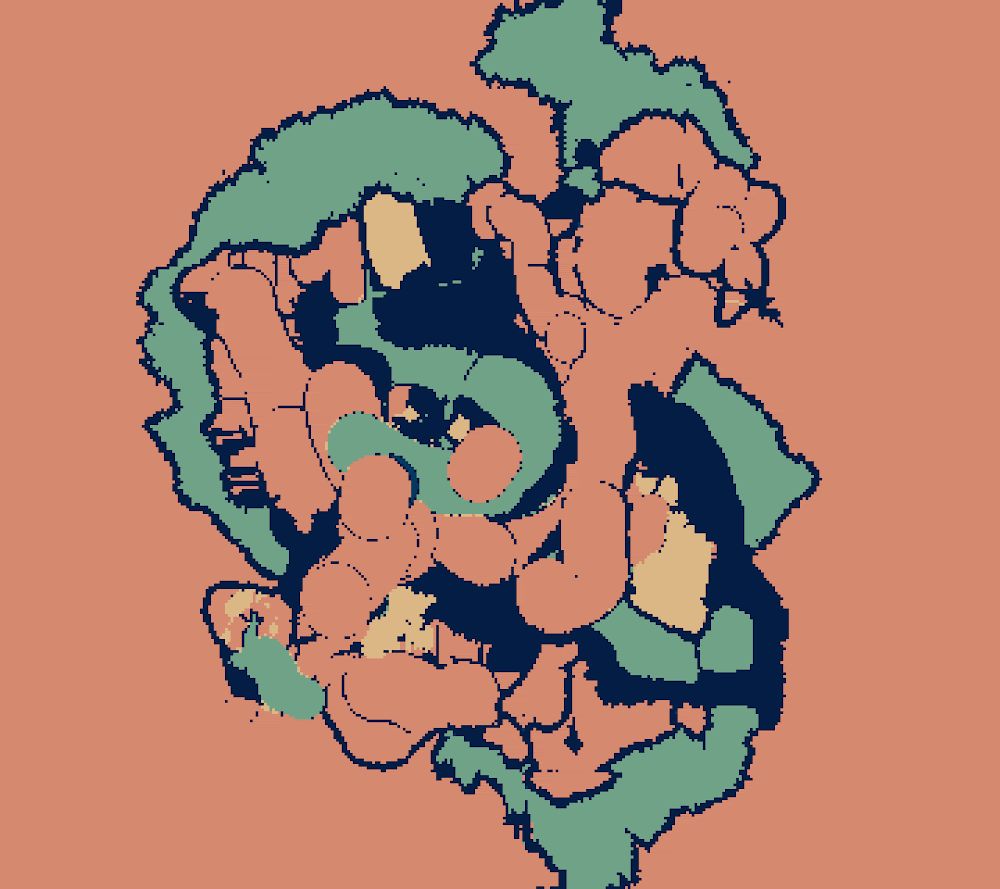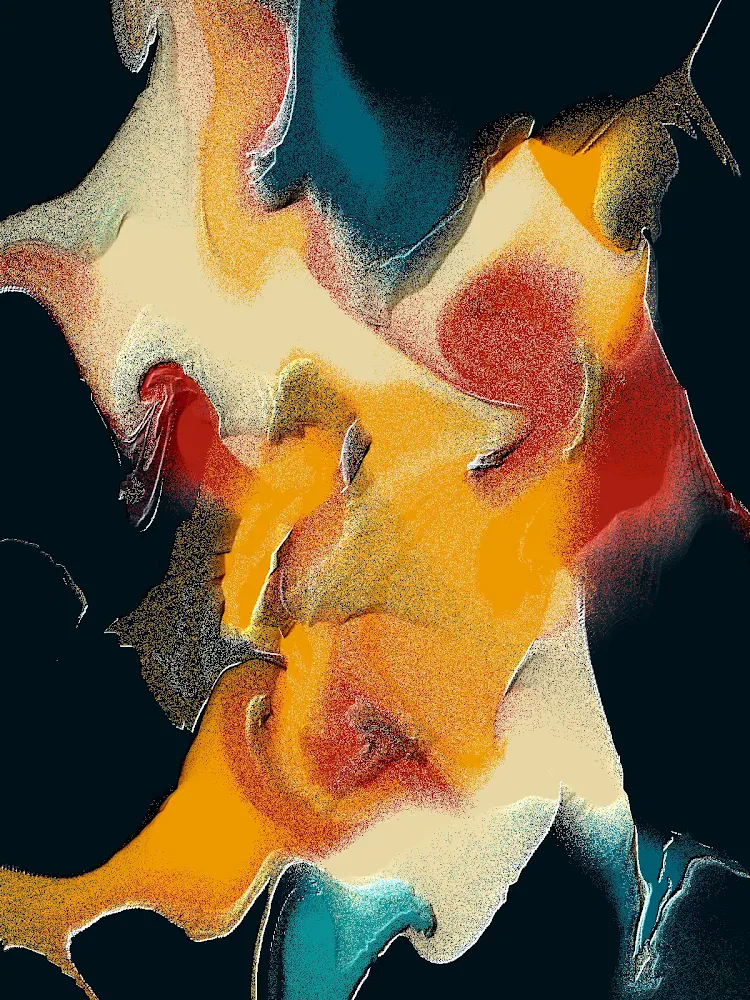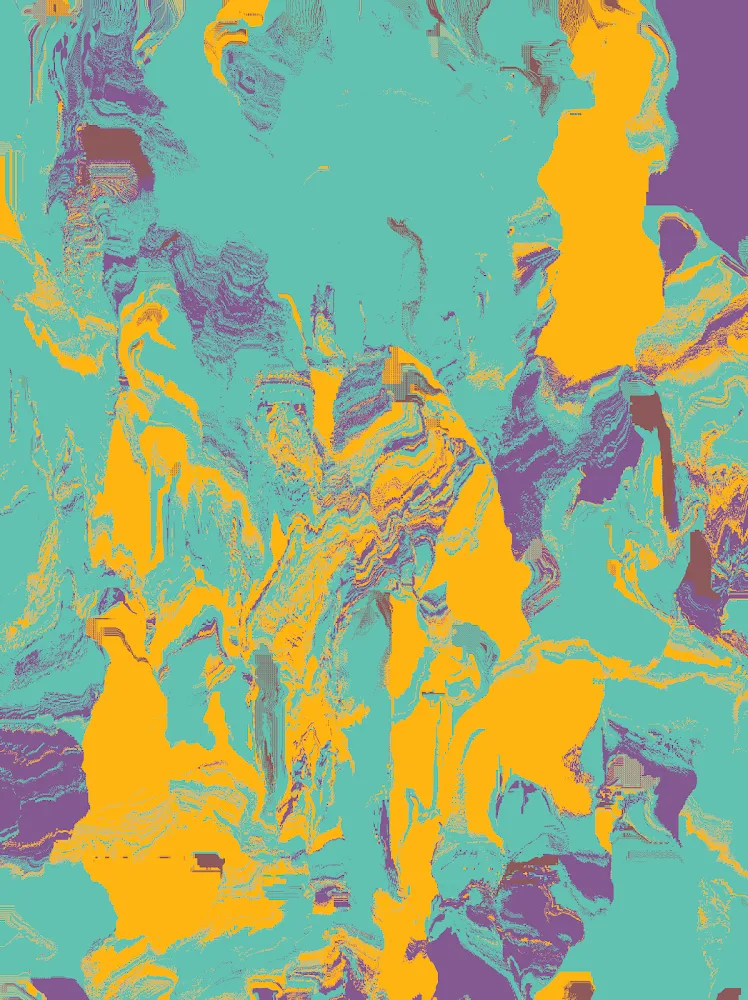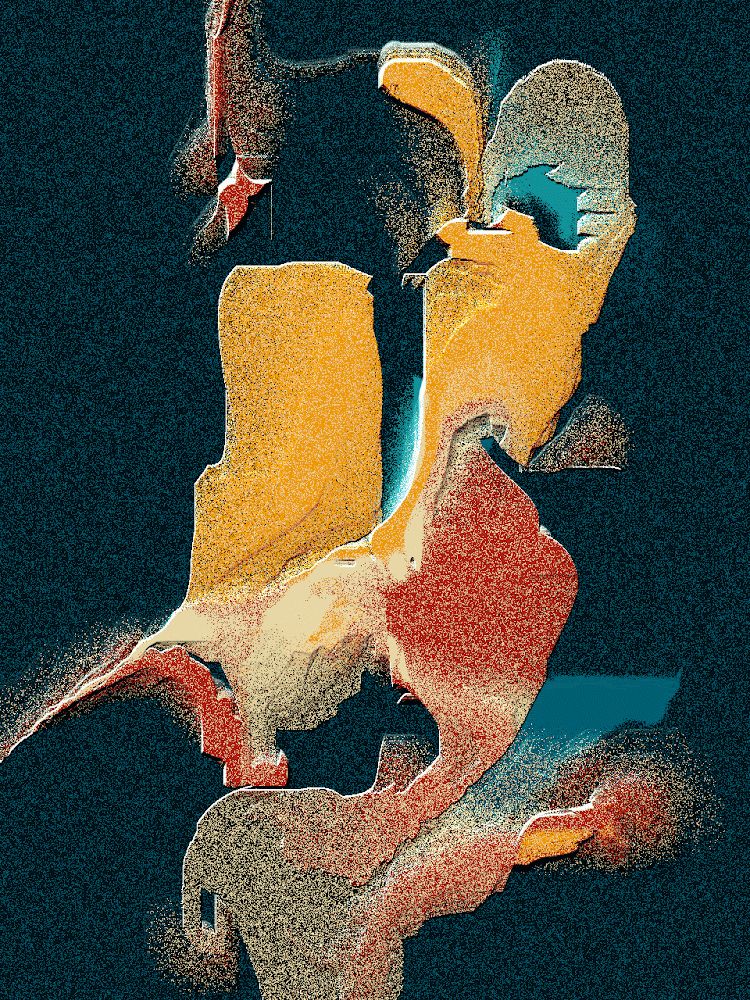Subscribe to get the latest on artists, exhibitions and more.
Pixels of light - A Conversation with Itsgalo

You have spoken about the fact that you’re interested in exploring the materiality of pixels. How do you observe these contradictory elements?
To me it’s important to remember that pixels are made of light. And they’re not just colors, they’re delicate balances of electronic signals. This materiality is different from ink, per se, in that it mixes differently and it can evolve over time. My work emphasizes this aspect and leverages the technology behind the pixel to produce captivating visual effects.
We have asked all artists in the exhibition to tell us how imperfections, errors and mistakes feed into their practice. It feels with your work in particular, you bring the imperfections purposefully to the surface?
I like generative art because it makes use of entropy and chaos to produce compositions that are unpredictable. While algorithms are typically deterministic, using pseudo random number generators to guide the parameters of a system can make it feel pretty random. For me imperfection is not necessarily about glitches (which are cool in themselves) but more about entropy and unpredictability.
It’s the grainy quality in Sicilia that I find so absorbing. The work loops seamlessly and it’s incredibly elegant. What were the thoughts behind the series ?
This algorithm was built almost a year ago when I was exploring this concept of an “infinite animated painting.” I wanted to produce a work that would feel like it paints itself forever. For me the low-res tradition of the GIF felt like the perfect medium because GIFs famously loop endlessly. Also what’s more digitally native than the animated GIF?
The colour palette of Sicilia reminds of the Bauhaus movement. I know that you’re from an architectural background. Is there a direct influence on your work ?
Definitely. I am certainly influenced by the Bauhaus and many other 20th century art movements like Suprematism and Cubism. As an architect, I put a lot of emphasis on form and composition (the 2D space of the screen, in this case). You can see some architectural hints in SILICA when some forms start to look like stairs or walls.
Your work is technically intricate. How do you navigate between the technical aspects of your work and the emotional and expressive elements?
It’s a bit tricky at times. Since I’m not trained as a programmer a lot of the technical aspects of my work are not very clean or well structured. There’s a lot of sloppy code in there! The emphasis is more on the visual and formal output. Although there is also a certain beauty in well made code.
You are a professor and artist. How do you have time to do both and where do you see your artistic work go from here?
Yes, my schedule is quite full! Not only that but I also run my own architecture practice, too. I want to have a good balance between my academic career and my art/architecture practices. What has been really nice about the support I’ve received from the digital art community is that I don’t have to apply for grants and wait a long time to fund my research projects. There’s also a nice synergy in my life where my art informs my teaching, etc. There’s a long history of architects who are also painters, I just happen to code pixels.
Leyla Fakhr
Leyla Fakhr is Artistic Director at Verse. After working at the Tate for 8 years, she worked as an independent curator and producer across various projects internationally. During her time at Tate she was part of the acquisition team and worked on a number of collection displays including John Akomfrah, ‘The Unfinished Conversation’ and ‘Migrations, Journeys into British Art’.
She is the editor...
Itsgalo
Itsgalo is the screen-name for Galo Canizares, a designer, writer, and educator working across various creative fields from architecture to digital art to experimental software. He is currently an assistant professor of architecture at the University of Kentucky’s College of Design where he teaches courses on visualization and representation.
Galo’s work interrogates the emerging sociotechnical...



